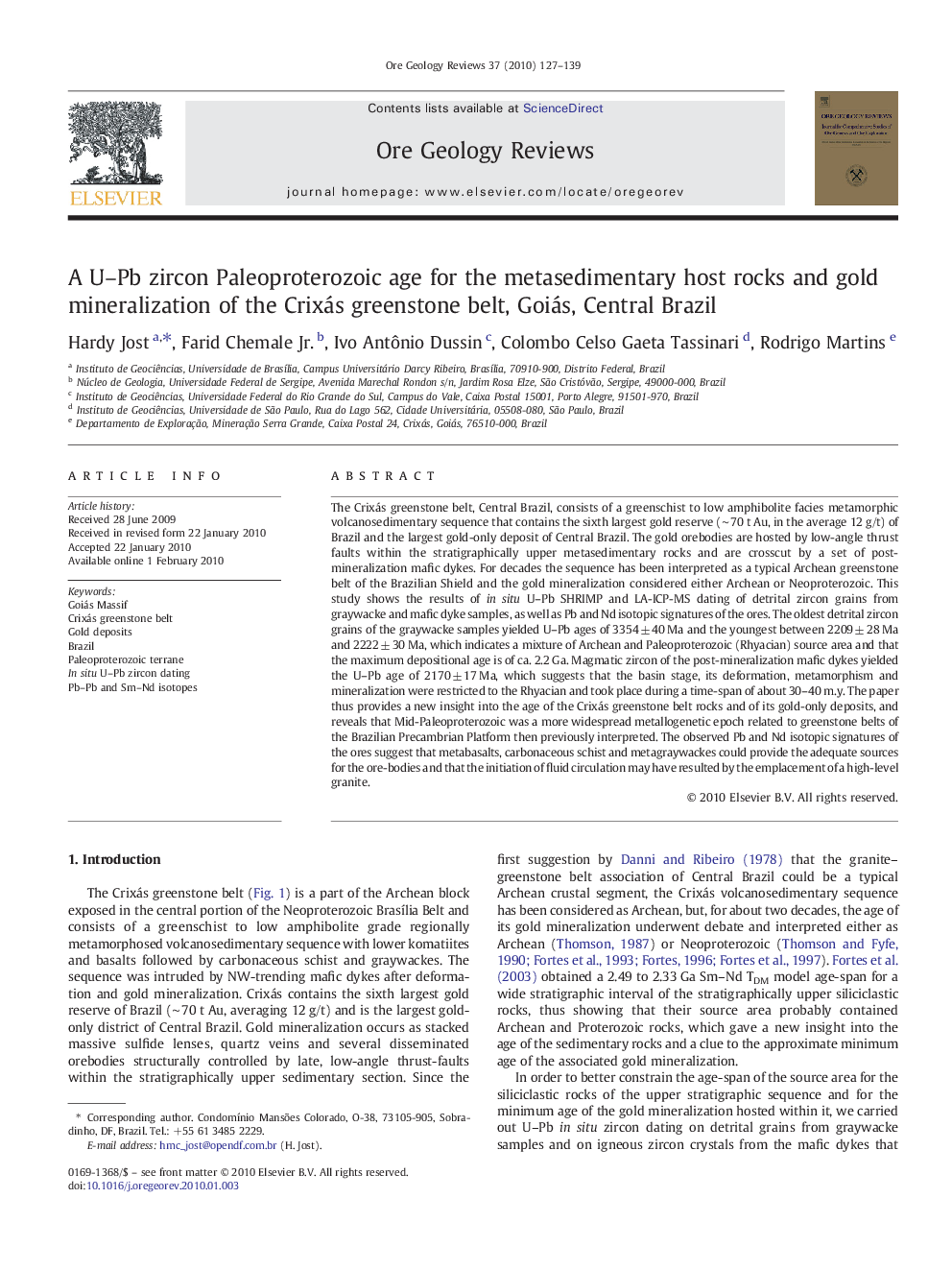| کد مقاله | کد نشریه | سال انتشار | مقاله انگلیسی | نسخه تمام متن |
|---|---|---|---|---|
| 4697856 | 1351908 | 2010 | 13 صفحه PDF | دانلود رایگان |

The Crixás greenstone belt, Central Brazil, consists of a greenschist to low amphibolite facies metamorphic volcanosedimentary sequence that contains the sixth largest gold reserve (∼ 70 t Au, in the average 12 g/t) of Brazil and the largest gold-only deposit of Central Brazil. The gold orebodies are hosted by low-angle thrust faults within the stratigraphically upper metasedimentary rocks and are crosscut by a set of post-mineralization mafic dykes. For decades the sequence has been interpreted as a typical Archean greenstone belt of the Brazilian Shield and the gold mineralization considered either Archean or Neoproterozoic. This study shows the results of in situ U–Pb SHRIMP and LA-ICP-MS dating of detrital zircon grains from graywacke and mafic dyke samples, as well as Pb and Nd isotopic signatures of the ores. The oldest detrital zircon grains of the graywacke samples yielded U–Pb ages of 3354 ± 40 Ma and the youngest between 2209 ± 28 Ma and 2222 ± 30 Ma, which indicates a mixture of Archean and Paleoproterozoic (Rhyacian) source area and that the maximum depositional age is of ca. 2.2 Ga. Magmatic zircon of the post-mineralization mafic dykes yielded the U–Pb age of 2170 ± 17 Ma, which suggests that the basin stage, its deformation, metamorphism and mineralization were restricted to the Rhyacian and took place during a time-span of about 30–40 m.y. The paper thus provides a new insight into the age of the Crixás greenstone belt rocks and of its gold-only deposits, and reveals that Mid-Paleoproterozoic was a more widespread metallogenetic epoch related to greenstone belts of the Brazilian Precambrian Platform then previously interpreted. The observed Pb and Nd isotopic signatures of the ores suggest that metabasalts, carbonaceous schist and metagraywackes could provide the adequate sources for the ore-bodies and that the initiation of fluid circulation may have resulted by the emplacement of a high-level granite.
Journal: Ore Geology Reviews - Volume 37, Issue 2, April 2010, Pages 127–139